WEST SACRAMENTO, Calif. (Nov. 17, 2025) – The Delta Protection Commission voted today to appeal the Department of Water Resources’s certification that the Delta Conveyance Project is consistent with the Delta Plan.
The Project would create a 45-mile tunnel starting on the Sacramento River at the town of Hood and ending at the Bethany Reservoir west of Tracy, near the community of Mountain House in the South Delta.
The Commission’s appeal contends that the Project would do lasting harm to the Delta, irrevocably altering “the rural character of the Delta, its economic pillars (agriculture and recreation), and its cultural heritage.”
It also contends that other options that don’t harm the Delta have not been adequately considered.
The project would use thousands of acres of agricultural land during construction and leave another 1,000 permanently changed, often with industrial-looking facilities, at the four major impact areas: Hood, Twin Cities Road near I-5, Lower Roberts Island, and near the Bethany Reservoir State Recreation Area. Other permanent facilities would be built in the Delta on the tunnel route.
The Delta Reform Act of 2009 establishes coequal goals for the Delta of providing a more reliable water supply for California and protecting, restoring, and enhancing the Delta ecosystem. It also states that the coequal goals “shall be achieved in a manner that protects and enhances the unique cultural, recreational, natural resource and agricultural values of the Delta as an evolving place.”
Commissioner Patrick Hume, a Sacramento County Supervisor, said at a preliminary Commission discussion of the matter on Nov. 3: “This body is the the last bastion of support for the Delta as a place. This is really the voice for the flora, the fauna, the farmers, the Flyway, the fisheries, and the economy that the Delta represents.”
The Commission’s vote to appeal on Monday was 9-0, with one abstention.
The Commission is made predominantly of elected representatives in the Delta, with 11 of its 15 members coming from county boards of supervisors, city councils, and local reclamation districts, which are responsible for flood control in the Delta’s low-lying farmland and small communities.
The remaining four members represent state agencies, and they have typically abstained on votes regarding the Delta Conveyance Project.
Commission Chair Diane Burgis, a Contra Costa County Supervisor, did not attend the meeting today and has recused herself from past discussions and votes regarding the Project. Burgis serves on the Delta Stewardship Council, which will hear the Commission’s appeal and any other appeals filed by today’s deadline.
If the Council upholds any of the appeals, the Project could be remanded to DWR to address Delta Plan inconsistencies.
The Commission’s appeal, including maps showing impact areas, can be seen here (PDF).
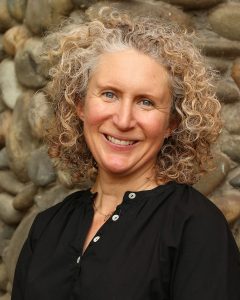
Amanda Bohl
WEST SACRAMENTO, Calif. (Oct. 9, 2025) – The Delta Protection Commission has appointed Amanda Bohl as its next Executive Director. She is expected to join the Commission on Oct. 20.
Bohl currently serves on the executive management team of the Delta Stewardship Council, where she is the Special Assistant for Planning and Science. There, she leads the Delta Plan Interagency Implementation Committee (DPIIC) and guides cooperation among the 18 state and federal agencies – including the Delta Protection Commission – involved in the Delta Plan.
Prior to joining the Council in 2016, Bohl was the Economic Development Lead for the Sacramento-San Joaquin Delta Conservancy. There, she managed the Delta Marketing Project and helped develop the Conservancy’s Proposition 1 Grant Program, which funded water quality and ecosystem restoration grants.
“The Delta is one of our greatest treasures, rich in natural resources, agriculture, history, and diverse communities,” said Diane Burgis, Chair of the Delta Protection Commission and Contra Costa County’s District 3 Supervisor.
“We were fortunate to have an outstanding pool of candidates. Moving forward, I’m excited about the Delta Protection Commission’s appointment of Amanda Bohl. She brings the vision, leadership, and understanding needed to navigate the complexities of this unique and vital region.”
Bohl has spent her career focused on people’s connection to the land. “When I think of the Delta Protection Commission, I think of landscapes, the land, places,” she said. “I also think of the best of public service and what government can do to protect places.”
She grew up in Amador County, but her childhood was steeped in Delta life. She enjoyed boating and camping in the Delta with her parents and grandparents, and still remembers the family’s drive to Rio Vista in 1985 to see Humphrey the Whale.
“I’m thrilled to be joining the Delta Protection Commission and to be serving the Delta in this new capacity,” Bohl said. “With new challenges and opportunities on the horizon, the Commission’s mission to protect, maintain, enhance, and enrich the overall quality of the Delta environment and economy has never been more important.”
Bohl has a bachelor’s degree in international studies from Southern Oregon University and a master’s degree in community development from the University of California, Davis. She is a 2014 Water Education Foundation Water Leader, and serves on the board of the Sacramento Valley Conservancy.
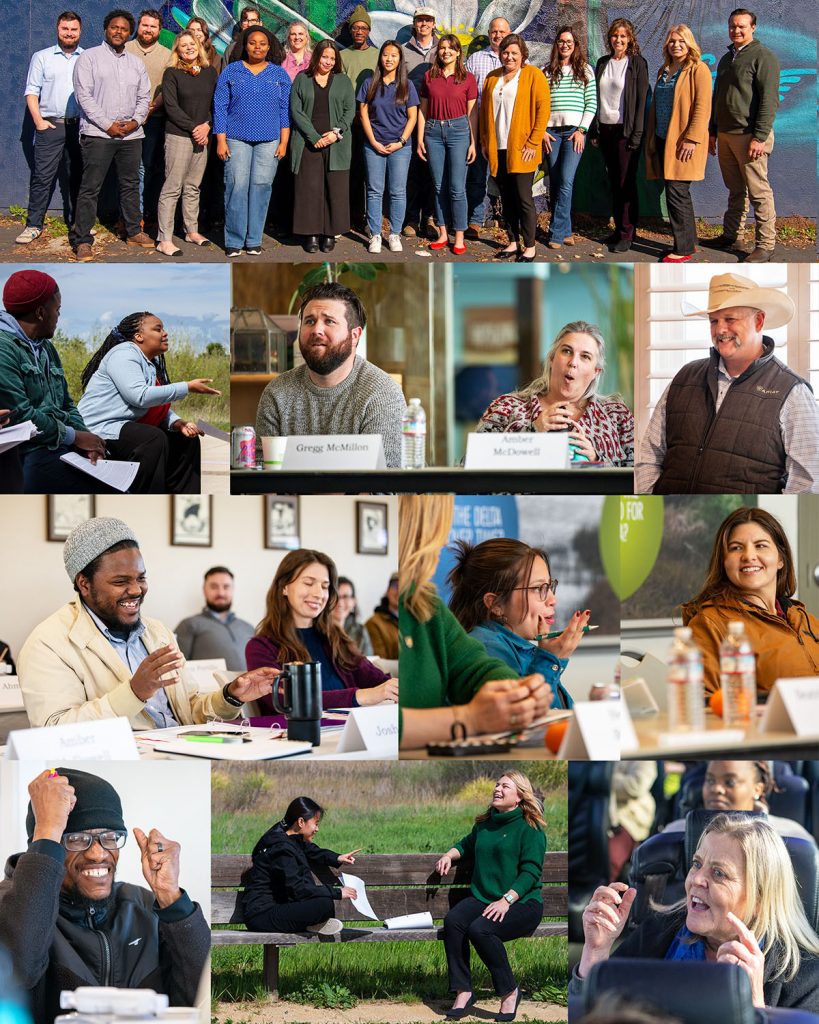 Applications are open for the 2026 Delta Leadership Program, a joint effort of the Delta Protection Commission and the Delta Leadership Foundation.
Applications are open for the 2026 Delta Leadership Program, a joint effort of the Delta Protection Commission and the Delta Leadership Foundation.
The program targets potential or emerging leaders in the Delta from all walks of life – agriculture, law enforcement, local government, non-profit organizations, local business, and the tourism and hospitality sectors, among others. It puts participants through an intensive curriculum to expand their knowledge of key issues and challenges in the Delta, teach them leadership skills and tools, build relationships and trust, and foster community.
The ultimate goal of the program, which has been operating since 2016, is to build a cadre of dedicated leaders to protect and improve the Delta. Alumni can be seen in leadership positions throughout the Delta and often appear in the news.
What’s Involved
Interested participants can apply through 5 p.m. Monday, Nov. 24, participants are announced the week of Dec. 8, and the curriculum – five day-long seminars held on Fridays – runs January through April. Applicants must commit to 100% attendance on these dates to be considered for participation in the program:
- Seminar 1: Jan. 9, 2026, in Sacramento
- Seminar 2: Jan. 30, 2026, in Stockton
- Seminar 3: Feb. 20, 2026, in Rio Vista
- Seminar 4: March 20, 2026, in Oakley
- Seminar 5: April 17, 2026, in Clarksburg
In addition to attending seminars, participants work on team projects designed to benefit the Delta, with some of the work occurring during seminars and some on their own time – about two hours per month. Participants also can take an air and water tour of the Delta in March or April, date to be determined.
The program concludes with a graduation at the Delta Protection Commission meeting tentatively scheduled for 5 p.m. May 21 at a location in the Delta. The exact date will be determined in November, when Commission sets its 2026 meeting schedule.
Applying
The application form can be completed online. The deadline is 5 p.m. Monday, Nov. 24, 2025.
The quality and content of the application is critical to the applicant’s success. Try to include specific examples and make sure you have included all of your civic and leadership experience and service.
People accepted into the program will be notified by the week of December 8, 2025.
Submission Checklist
- REQUIRED: Complete the Delta Leadership Program 2026 application form online by 5 p.m. Nov. 24.
- REQUIRED: Upload at least one and up to two substantial letters of recommendation. You will upload these during the online application process.
- OPTIONAL: You may upload your resume during the application process.
QUESTIONS?
If you have questions, please contact Program Coordinator Erik Vink at erik.vink@delta.ca.gov or (530) 650-6327.
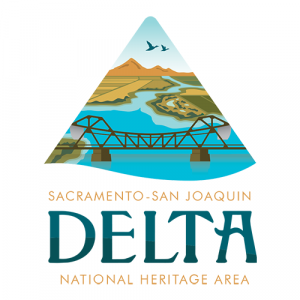 WEST SACRAMENTO, Calif. (August 5, 2025) – Established by Congress in 2019, the Sacramento-San Joaquin Delta National Heritage Area – California’s first and only National Heritage Area (NHA) – is set to be branded and marketed.
WEST SACRAMENTO, Calif. (August 5, 2025) – Established by Congress in 2019, the Sacramento-San Joaquin Delta National Heritage Area – California’s first and only National Heritage Area (NHA) – is set to be branded and marketed.
The Delta Protection Commission (DPC) is teaming up with Honey, a design and marketing studio in Sacramento, to create a Tourism Brand and Marketing Plan for the NHA that will promote sustainable tourism and economic development in the region by encouraging responsible use of, and visitation to, the Delta’s unique resources and communities.
“This project is a significant step,” says Program Manager Blake Roberts. “For two decades, we collaborated with our Congressional delegation and the public to establish the NHA. Now we are excited to embark on an important effort that will demonstrate to visitors what a special place the Delta truly is.”
Honey “believes strong branding begins with listening,” says the agency’s president Maggie Hamilton Giordanengo. “We are honored to immerse ourselves in the voices, values, and lived experiences of the Delta communities to craft a brand that inspires sustainable tourism.”
The rollout of the plan will include public outreach, market research and the creation of a brand toolkit. The project is expected to be completed by late June of 2026.
The NHA is managed by the DPC, which is committed to supporting the region’s economic development and the preservation of its historical and cultural significance.
There are 62 National Heritage Areas in the United States. NHAs support historic preservation, natural resource conservation, recreation, heritage tourism, and educational projects through public-private partnerships.
For more information about the Delta NHA Tourism Branding and Marketing plan, contact Kira O’Donnell, NHA information officer, kira.odonnell@delta.ca.gov, (530) 650-6362; or Blake Roberts, NHA program manager, blake.roberts@delta.ca.gov, (530) 650-6572.
For more information about the Sacramento-San Joaquin Delta NHA, see our fact sheet (PDF) and the NHA Management Plan (PDF), visit the DPC’s website or call (916) 375-4800.
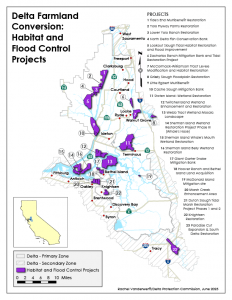 WEST SACRAMENTO, Calif. (July 24, 2025) – The Delta Protection Commission invites public comment through Sept. 8, 2025, on the preliminary report of its study of Delta farmland conversions for water supply, flood control, and habitat projects.
WEST SACRAMENTO, Calif. (July 24, 2025) – The Delta Protection Commission invites public comment through Sept. 8, 2025, on the preliminary report of its study of Delta farmland conversions for water supply, flood control, and habitat projects.
Preliminary results of the study (PDF) were presented at public workshops held July 15 and 17, and to the Delta Protection Commission at its regular meeting on July 17. Several speakers highlighted their concern about the impact of the aggregate loss of farmland in the Delta. Agriculture drives the Delta’s economy, and protecting its critical mass is part of the Delta Protection Commission’s mandate.
The research is ongoing, but the Commission is seeking feedback to guide its continuing study. All feedback is welcome, but the DPC is particularly interested in:
- For Delta farmers, reclamation districts, and other landowners, what impacts are they experiencing when farmland is converted?
- Are the processes leading up to the conversions adequate in terms of consultation with adjacent landowners and mitigation of negative impacts?
- Are options to maintain farmland in ways that support ecosystem goals being given adequate consideration?
- Project areas shown on maps in the preliminary report include some acreage that remains as farmland and needs to be subtracted from conversion totals before the research is finalized. Beyond this, is the acreage of completed and planned conversions in the preliminary report accurate and complete?
Comments on the preliminary study may be submitted by email to submit@delta.ca.gov. The deadline is 5 p.m. Monday Sept. 8, 2025.
Wednesday, July 23, 2025, 1:30-2:30 p.m. (end time is approximate)
2101 Stone Blvd, Suite 200
West Sacramento, CA 95691
Pursuant to Government Code section 11123.5, members of the Committee will participate remotely in this meeting. The public will have the same level of remote access.
Password: 699069
Meeting URL: https://us06web.zoom.us/j/89423484620?pwd=AUbfopkGSohxvkbKgbXj8A82b66vwk.1
Join by Telephone
Dial: USA 404 443 6397
USA 877 336 1831 (US Toll Free)
Conference code: 473786
Questions, Comments, and Requests
If you have any questions or have a request for reasonable modification or accommodation due to a disability, please contact the Delta Protection Commission at dpc@delta.ca.gov or (916) 375-4800. Attachments and additional information can be found on the Delta Protection Commission website: delta.ca.gov.
Executive Director Selection Ad Hoc Committee Members
Diane Burgis, DPC Chair, Contra Costa County Board of Supervisors | Oscar Villegas, Yolo County Board of Supervisors | Patrick Hume, Sacramento County Board of Supervisors | Tom Slater, North Delta Reclamation Districts | Gloria Sandoval, CA Natural Resources Agency
 By Holly Heyser
By Holly Heyser
Delta Protection Commission
Rice acreage is growing rapidly in the Sacramento-San Joaquin Delta’s agricultural core.
It nearly tripled in the Delta’s Primary Zone between 2018 and 2022, according to data compiled for the Delta Protection Commission’s March 2025 Socioeconomic Indicators Update (PDF). That took it from the zone’s No. 11 crop to No. 9.
RICE ACREAGE IN THE DELTA (Cropscape data)
| Zone |
2018 |
2022 |
Change |
| Primary |
4,808 |
14,095 |
193% |
| Secondary |
1,988 |
3,083 |
55% |
| TOTAL |
6,796 |
17,178 |
153% |
Rice acreage is still dwarfed by corn. At nearly 60,000 acres, corn remained the Primary Zone’s No. 2 crop in 2022. But corn acreage is falling: It dropped 43% in the same period rice was rising.
“We could be looking at 15,000-20,000 acres of rice in the Delta this year,” said Michelle Leinfelder-Miles, Delta Crops Resource Management Advisor for the UC Cooperative Extension.
“I’m learning of rice going in places it hasn’t gone before,” she said. “The Delta community seems really coalesced on developing a rice industry.”
Why Is This Changing?
Both crops grow well in the Delta’s core, where high water tables limit what thrives. So why is rice gaining favor?
One reason is profit.
Staten Island now has 4,500 acres in rice, up from 300 in 2019. “It’s been more profitable than corn, 100%,” said Jerred Dixon, who manages the property as a living laboratory of wildlife-friendly farming for The Nature Conservancy.
“I make really good money growing rice,” said Dixon, who is also a member of the Delta Protection Advisory Committee. “You plant it, you watch it, then you harvest it. It’s not a very labor-intensive crop.”
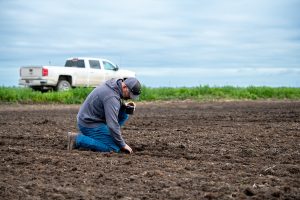
Jerred Dixon inspects drill-seeded rice on Staten Island during planting in April. Staten has shifted substantial acreage from corn to rice.
It’s also immune to one of the biggest challenges to growing rice farther north in the Sacramento Valley: water availability. The Delta always has water, even in drought. The biggest concern with Delta water is salinity levels.
But another reason for the shifting agricultural mosaic is self-preservation. Corn exacerbates a serious problem: subsidence. Rice doesn’t.
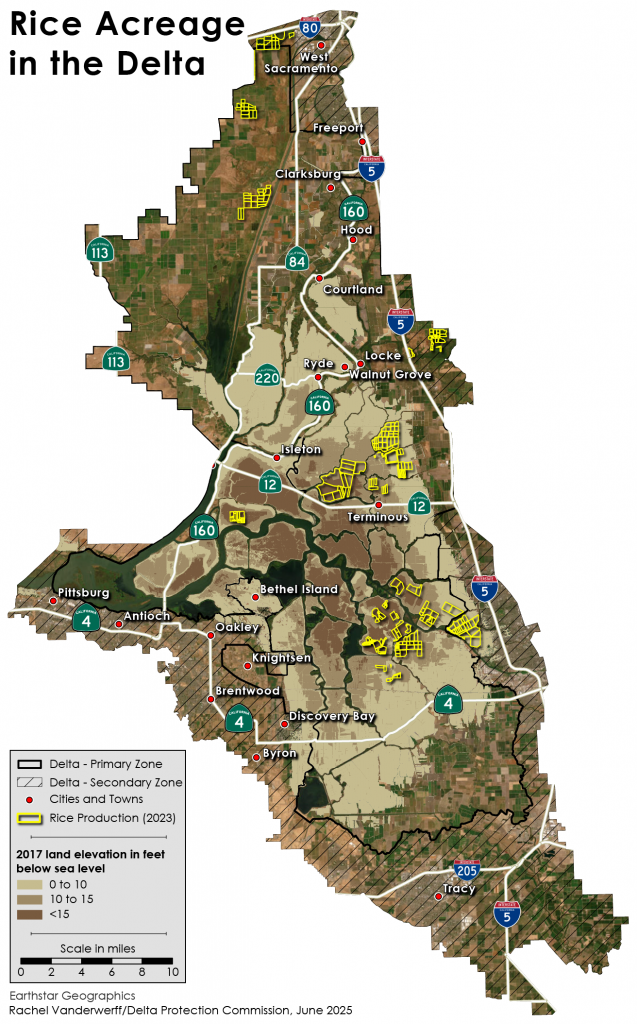
Click/tap on image to view full size.
What Is Subsidence?
The organic materials in the Delta’s peat soil oxidize when they hit air, turning into carbon dioxide. The soil disappears; the elevation drops.
After a more than a century of growing dry-soil crops on lands that were drained for farming, islands in the Delta’s core sit as much as 24 feet or more below sea level. That’s a double whammy for levees that sit at sea level.
First, levees are threatened by the sheer pressure of river water that sits higher than the islands, which can lead to levee breaks. Second, that water can also start moving soil particles underneath the levee, leading to a collapse. “That’s what happened on Victoria Island last year,” said Steve Deverel, Principal Hydrologist of HydroFocus.
Both issues elevate the risk of floods that can turn farms into an inland sea, permanently.
How Is Rice Better?
Re-wetting the soil stops the oxidation, preventing further subsidence.
There are two ways to re-wet the soil: restoring wetlands or converting to flooded crops like rice.
Wetlands actually rebuild the soil, albeit slowly – it could take 150 years to restore elevations on some Delta Islands. But wetlands don’t produce a crop, and convincing a farmer to forego a way of life is a tough sell, at best.
Rice fields aren’t flooded year-round, so they don’t have as much subsidence benefit as permanent wetlands. But rice is a substantial improvement over dry-field farming, and it helps maintain the farm economy and Delta livelihoods.
The Delta Protection Act calls for the preservation of agricultural viability in the Delta. Loss of working farmland can hollow out the critical mass needed for local farm services, leading to a downward spiral in the linchpin of the region’s economy.
Loss of farm revenue brings additional risks: Agricultural revenue pays for levee maintenance in much of the Delta, where myriad reclamation districts were established to reclaim islands from tidewater.
“The overarching benefit (to rice) in my mind is levee stability and water supply reliability,” Deverel said.
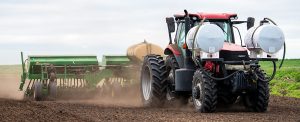
Rice planting on Staten Island in April
Where Is State Policy on All of This?
There is a lot of activity aimed at re-wetting soil in the Delta’s most subsided lands, but not just because of subsidence.
While subsidence is a grave local threat, its byproduct is a global one, because carbon dioxide warms the atmosphere. Because of the dynamic with peat soil, the Delta produces 21% of the state’s non-animal farming greenhouse gases, while it is home to only 6% of the state’s plant-based farming.[i]
California has committed to net-zero carbon emissions by 2045, and a recent state law – AB 1757 – requires setting ambitious targets for nature-based solutions. Part of the plan to reach those targets is re-wetting 50,000 of the 150,000 most subsided acres in the Delta[ii], whether with wetlands or rice.
“The 150,000-acre area we’re focused on is highly organic, deeply subsided, and very likely not viable for the future,” said Campbell Ingram, Executive Officer of the Sacramento-San Joaquin Delta Conservancy. “It’s the landowner’s choice, but unless they’re re-wetting the soil, they literally are digging that hole deeper every day.”
The Conservancy has awarded more than $34 million in Nature Based Solution grants to restore wetlands and help farmers convert to rice in the Delta. The rice conversion funding will add about 5,500 acres – a substantial increase for the Delta.
Conversion costs are one of the biggest obstacles to growing rice, because rice requires specialized water infrastructure and GPS-leveled land for optimal production.
“The viability of these lands is very much in doubt over the long term,” Ingram said. “What we’re incentivizing is a way to try to keep your land viable.”
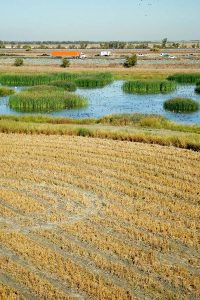
A harvested rice field adjacent to a wetland in the Yolo Bypass Wildlife Area (PHOTO: Department of Water Resources)
Another Perk of Rice: (Paid) Wildlife Benefits
Rice in the Sacramento Valley has long been lauded as “surrogate wetlands” for waterbird habitat.
Traditionally in California, rice farmers burned rice straw after the harvest to prepare fields for spring planting, but burning was sharply curtailed in the 1990s to improve air quality in the Central Valley. Many farmers switched to winter flooding to decompose rice straw, providing hundreds of thousands of acres of habitat for waterfowl and shorebirds that migrate here during the winter.
Farmers can monetize this. Flooded rice fields that attract waterfowl can be leased to duck hunters. In addition, the BirdReturns program pays farmers and wetland managers to flood fields to appropriate depths for shorebirds at key times during the migration.
A recent UC Davis study highlights even broader wildlife benefit to keeping a mosaic of rice and wetlands on the landscape. It concluded 500,000 acres of winter-flooded rice is needed in California to support not only the waterbirds, but also sandhill cranes, giant garter snakes (listed as “threatened” on the Endangered Species List), and fish, particularly the endangered winter run chinook salmon.
How Does Rice Help Fish?
The fish benefit stems from rice fields’ unintentional second crop: zooplankton. When you add shallow water to land and keep it flooded for at least three weeks, the dissolved carbon leads to bacterial growth that creates an explosion of small invertebrates collectively called zooplankton. Zooplankton makes great fish food.
Prior to the arrival of modern agriculture – and, importantly, the levees that enable it – fish could often swim freely between river channels and shallow-flooded wetlands, where they grew fat on zooplankton. Levees sever that connection, constraining fish to fast-moving river channels that are fish-food deserts. This is one of many factors contributing to the decline of salmon and other native fish populations.
In the Sacramento Valley, researchers have experimented with connecting waterways to historic off-channel landscapes, which now include winter-flooded rice fields, to allow young salmon access. That premise is a central feature of the “Big Notch” project in the Yolo Bypass. Until recently, Fremont Weir has directed water into the Yolo Bypass only when river levels threaten to flood cities. Now, a notch cut into the weir will allow flooding more frequently to benefit fish.
This process, known as reactivating the floodplain, isn’t feasible in the deeply subsided parts of the Delta, where there’s a 25-foot drop from river to farm fields.
But that’s not the only way to feed fish: Farmers can also pump zooplankton-rich water out of their fields and into fish-bearing waterways. This mimics the effect of winter flooding, which pours zooplankton from shallow wetlands into temporarily connected rivers.
CalTrout has a program that pays landowners to grow “zoop soup” and pump it into canals and rivers during key fish migration times in the winter. Its research is showing fish do indeed get fatter from these releases, even as much as six miles downstream, increasing their chances of surviving long enough to spawn.
Tantalizing new research that studies markers deposited in salmon eyeball lenses suggests salmon that feed on floodplain food have a better chance of reaching adulthood.
The sample sizes have been small, but the results are remarkable: Among fall-run chinook salmon, 9% to 16% headed into the ocean showed markers of having fed from floodplain sources, while 45% to 73% that returned to spawn showed those markers. This suggests “floodplain fatties” have an advantage in the survival game.
“We can have both wildlife abundance and agricultural abundance,” said CalTrout Senior Scientist Jacob Katz. “They don’t have to be at odds.”
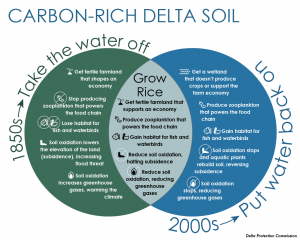
Click/tap on image to view full size
What’s needed to enlist farmers’ help rewetting Delta soil to meet climate, land subsidence, and fish and wildlife goals without losing their livelihood and way of life?
Re-wetting the Delta has already begun. Wetland restorations have been concentrated on government-owned lands, where profits aren’t a consideration, as well as on portions of agricultural land that have become unfarmable due to loss of land elevation.
Converting from dry-soil crops to rice, though, requires some assistance because it represents a cultural change from familiar, successful, longstanding farming practices.
Sources we consulted with recommended the following options:
- More grant funding to help with conversion to rice (leveling land, installing specialized water infrastructure). One appropriate new source is funding from Proposition 4, the 2024 voter-approved $10 billion general obligation bond for climate resilience, water, and natural resource management programs.
- More grant funding to support wildlife-friendly practices such as timing flooding to serve migrating shorebirds and waterfowl, and to grow zooplankton and release it as pulses of migrating salmon pass by.
- Grant funding to study alternatives that could optimize rice: “Alternative wetting and drying” involves draining rice fields for short periods at key times during plant growth to reduce the bacteria in the soil that release methane, a greenhouse gas. It trades a small increase in carbon emissions for a more substantial reduction in methane, increasing rice’s net greenhouse gas benefit. It has been studied elsewhere, but needs research to confirm it would work well in the Delta.
- Policy and permitting support to bring rice-growing infrastructure to the Delta. Currently, Delta farmers have to ship their rice to the Sacramento Valley for drying.
- Support and assistance for branding and marketing Delta rice. “The quality of rice that comes from the Delta is superb,” said Staten Island’s Jerred Dixon. “It would be great to have a Delta rice label in the future to showcase all the benefits that come from growing rice in the Delta.”
[i] Solutions for subsidence in the California Delta, USA, an extreme example of organic-soil drainage gone awry; Steven J. Deverel, Sabina Dore, and Curtis Schmutte; 2020
[ii] California’s Nature-Based Solutions (NBS) Climate Targets, Appendix 1 – Methodology (PDF), page 35
People we consulted for this article
Lauren Damon, Sacramento-San Joaquin Delta Conservancy
Steve Deverel, HydroFocus
Jerred Dixon, Staten Island
John Eadie, UC Davis
Campbell Ingram, Sacramento-San Joaquin Delta Conservancy
Jacob Katz, CalTrout
Michelle Leinfelder-Miles, UC Cooperative Extension
Laurel Marcus, Fish Friendly Farming
Josh Martinez, California Department of Water Resources
Russ Ryan, Metropolitan Water District of Southern California
Robert Shortt, UC Berkeley

Articles Exploring Delta Data
By Holly Heyser Delta Protection Commission Rice acreage is growing rapidly in the Sacramento-San Joaquin Delta’s agricultural core. It nearly tripled in the Delta’s Primary Zone between 2018 and 2022, […]
June 30, 2025
WEST SACRAMENTO, Calif. (March 21, 2025) – Unemployment fell. Median income rose. Land in agricultural production increased. These improving socioeconomic indicators for the Sacramento-San Joaquin Delta are highlights of a […]
March 21, 2025
Pretty much the entire Sacramento-San Joaquin Delta is a floodplain, where the chances of flooding in any given year are as high as 1 in 10 in some areas[1]. But […]
October 21, 2024
What policies would Delta residents support for adapting to environmental changes in the region? Given nine choices in a recent survey of Delta residents, only one garnered majority support: increasing […]
August 22, 2024
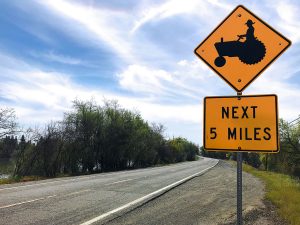 WEST SACRAMENTO, Calif. (June 17, 2025) – The Delta Protection Commission has scheduled public workshops on July 15 and 17 to hear about the impacts of farmland conversion for habitat and flood control projects on farmers, reclamation districts, and other affected parties.
WEST SACRAMENTO, Calif. (June 17, 2025) – The Delta Protection Commission has scheduled public workshops on July 15 and 17 to hear about the impacts of farmland conversion for habitat and flood control projects on farmers, reclamation districts, and other affected parties.
Sign Up Here
Agriculture is a cornerstone of the Delta economy, and changes to farmland use can create challenges for those who rely on it.
Preliminary research by Delta Protection Commission staff suggests that more Delta farmland is being converted for habitat and flood management projects than for urban development. Additional conversions are planned. UPDATE: The preliminary results of our study are now available (PDF).
The Delta Protection Commission is preparing a report to better understand the scale and impacts of these changes, and to offer practical, achievable recommendations to prevent negative impacts.
Input from these workshops will be included in the final report, “Delta Farmland Conversions: Water Supply, Flood Control, and Habitat Projects,” which is expected to be presented to the Delta Protection Commission in September.
Workshop dates, times and locations are:
Following the second workshop, the Delta Protection Commission will hold its regular meeting at 5 p.m. at the same location as the workshop: The Point Restaurant. At that meeting, staff will share a summary of input received at the workshops.
Sign Up
To attend, please use the sign-up form below to ensure adequate seating is available at each workshop.

DPC Chair Diane Burgis
WEST SACRAMENTO, Calif. (June 6, 2025) – The Delta Protection Commission is seeking a new Executive Director to guide protection and enhancement of the Sacramento-San Joaquin Delta region.
The DPC is one of three Delta-focused state agencies, and the only one overseen by an independent Commission composed mainly of elected representatives of Delta counties, cities, and reclamation districts.
“The Delta is rich in natural resources, agricultural production, history, and diverse communities and cultures. But it’s also a fragile place that needs our protection and support,” said Commission Chair Diane Burgis, who is a Contra Costa County supervisor.
“We’re looking for someone who can navigate the complexities of working with a variety of local, state, and federal agencies while providing strong vision, leadership, and direction for a staff of eight,” Burgis said.
More details, including key attributes of an ideal candidate, are available here.
What the DPC Does
The functions of the DPC include:
Land Use: Protecting legacy communities and the agricultural nature of the Delta by ensuring a variety of land-use decisions in the Primary Zone (PDF) conform with the Land Use and Resource Management Plan (PDF). The state Legislature has given the Commission authority to appeal these decisions, and hear appeals brought by others.
National Heritage Area: Promoting the Delta’s historic and cultural riches as the agency designated by Congress to coordinate the Sacramento-San Joaquin Delta National Heritage Area. The Delta is the first and only NHA in California. NHAs are supported by the National Park Service, but locally run and non-regulatory.
Great California Delta Trail: Fostering healthy connections to and through the Delta as the agency designated by the Legislature to coordinate the Great California Delta Trail. More than a single trail, the GCDT is envisioned as a network of land and water trails that will connect the San Francisco Bay Area to Sacramento.
Other DPC efforts include advocating for funding for levee maintenance and repairs, economic sustainability, community planning, and promoting the Delta as a place worthy of recognition, respect, and protection.
It also advocates for Delta interests with regard to the proposed Delta Conveyance Project.
Applying
To be considered for this exceptional career opportunity, immediately submit your resume, cover letter, and a list of six work-related references (two supervisors, two direct reports, and two colleagues, who will not be contacted until final stages and only with prior permission of the candidate). Resume should reflect years and months of employment, beginning/ending dates, as well as size of staff and budgets you have managed.
Resume review will begin the morning of Monday, July 7, 2025.
Please submit your application here.
WEST SACRAMENTO, Calif. (June 2, 2025) – The Delta Protection Commission is accepting applications for four seats and additional alternates on its Sacramento-San Joaquin Delta National Heritage Area Advisory Committee.
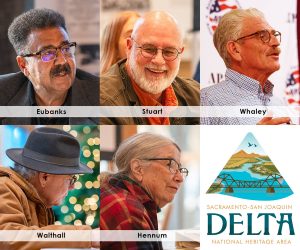 The incumbents, who are all eligible to serve additional terms, are Dwayne Eubanks, David Stuart, Dan Whaley, Stuart Walthall, and alternate Paulette Hennum.
The incumbents, who are all eligible to serve additional terms, are Dwayne Eubanks, David Stuart, Dan Whaley, Stuart Walthall, and alternate Paulette Hennum.
The committee, governed by this charter (PDF), advises the Delta Protection Commission about implementation of the National Heritage Area Management Plan (PDF) and acts as ambassadors to the diverse partners and communities in the NHA.
The committee is chaired by the Delta Protection Commission Executive Director or their designee, and includes two members of the Delta Protection Commission, 12 members of the public, and non-voting ex officio members representing the Legislature and public agencies.
Interested members of the public may apply to serve on this committee through 5 p.m. July 18. The Delta Protection Commission is expected to make the appointments Sept. 18.
Committee members are expected to attend six bimonthly in-person meetings per year, which are held in and around the NHA at rotating locations.
Apply for the openings here, or use the form below.
If you have questions, please email dpc@delta.ca.gov.



 Applications are open for the 2026
Applications are open for the 2026  WEST SACRAMENTO, Calif. (August 5, 2025) – Established by Congress in 2019, the
WEST SACRAMENTO, Calif. (August 5, 2025) – Established by Congress in 2019, the  WEST SACRAMENTO, Calif. (July 24, 2025) – The Delta Protection Commission invites public comment through Sept. 8, 2025, on the preliminary report of its study of Delta farmland conversions for water supply, flood control, and habitat projects.
WEST SACRAMENTO, Calif. (July 24, 2025) – The Delta Protection Commission invites public comment through Sept. 8, 2025, on the preliminary report of its study of Delta farmland conversions for water supply, flood control, and habitat projects. By Holly Heyser
By Holly Heyser




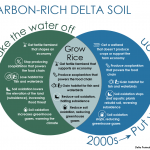
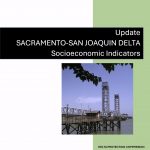


 WEST SACRAMENTO, Calif. (June 17, 2025) – The Delta Protection Commission has scheduled public workshops on July 15 and 17 to hear about the impacts of farmland conversion for habitat and flood control projects on farmers, reclamation districts, and other affected parties.
WEST SACRAMENTO, Calif. (June 17, 2025) – The Delta Protection Commission has scheduled public workshops on July 15 and 17 to hear about the impacts of farmland conversion for habitat and flood control projects on farmers, reclamation districts, and other affected parties.
 The incumbents, who are all eligible to serve additional terms, are Dwayne Eubanks, David Stuart, Dan Whaley, Stuart Walthall, and alternate Paulette Hennum.
The incumbents, who are all eligible to serve additional terms, are Dwayne Eubanks, David Stuart, Dan Whaley, Stuart Walthall, and alternate Paulette Hennum.